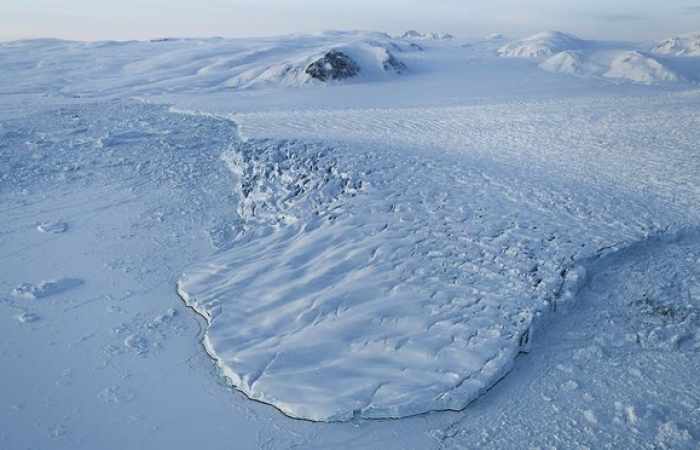“For every ice-core facility on the planet, this is their No1 nightmare,” said glaciologist Martin Sharp.
The ice cores – long cylinders extracted from glaciers – contain trapped gasses and particles that offer a glimpse into atmospheric history.
“When you lose part of an ice core,” Sharp said, “you lose part of the record of past climates, past environments – an archive of the history of our atmosphere. You just don’t have easy access to information about those past time periods.”
The university had recently acquired the dozen cores, or 1.4km (0.9 miles) of ice, drilled from five locations in the Canadian Arctic, and carefully transported them from Ottawa to Edmonton.
The samples were moved into the university’s brand-new, custom-built C$4m (US$3m) facility earlier this month. Days later, one of the freezers tripped a high-heat alarm.
“The way in which the freezer failed meant that it started to pump heat into the freezer,” said Sharp. “So it wasn’t just a question of it gradually warming up … It was actually quite rapidly raised to a temperature of 40C (104F).”
Sharp rushed to the walk-in storage freezer to survey the damage and found steaming puddles gathered around the millennia-old ice. “It was more like a changing room in a swimming pool than a freezer,” he said.
“I’ve had better days, let’s say that.”
Around 13% of the archive had been exposed to high heat, representing more than 180m of ice. None of the cores were completely destroyed.
“There are some which are clearly toast and there are others which are not obviously very much affected,” Sharp said.
An ice core from the Penny Ice Cap on Baffin Island lost about a third of its mass, amounting to about 22,000 years of history, while a core from Mount Logan, Canada’s tallest mountain, saw 16,000 years melted away.
But much of the collection was unaffected by the malfunction, thanks to a stroke of luck. A television crew had been documenting the ice core move and had asked that the samples be put in a second freezer because the lighting was better. The university complied, storing nearly 90% of the collection in an unaffected freezer.
“That’s basically what saved us,” said Sharp.
The question is now whether any research can be carried out on the affected cores.
“This incident will affect research, no question,” said Sharp. “It rules out certain studies that we might have wanted to conduct on the cores, such as reconstructing continuous long-term histories where parts of the cores have been lost or contaminated.”
As returning to the Arctic to replace the damaged ice cores would be a costly endeavour, the focus is now on regularly monitoring and safeguarding the ice cores that are left.
“It’s by no means a write-off from a scientific point of view,” said Sharp. “It’s just disappointing to have this happen at all and to have lost some ice that would be of potentially quite a bit of interest.”
More about: #arcticice
















































